Have a look at these three lenses. They all can fit on the same camera. They all zoom just as far (roughly) . But one costs £100, the other costs £300 and one costs £1600. BUT WHYYY?

What makes one of them that much better than the others? And would you be able to notice it?
There is such a bafflingly large range of lenses you can get for your camera, its hard to even begin to guess what to pick and why. I'm here to de-mystify this subject.
Key terms:
Before we jump into the types of lenses etc, I want to introduce you to two terms that will be key in the understanding of your lens : Focal length and Aperture.
FOCAL LENGTH
Focal length in highly imprecise layman's terms* describes 'how much zoom' your lens is capable of and is expressed in milimetres
*To be completely precise in what it actually means : The focal length of the lens is the distance between the lens and the image sensor when the subject is in focus, usually stated in millimetres. But that doesn't really tell us much about what it does, so I'm going to leave this definition here and carry on with my imprecise layman's approach.
Essentially, the smaller the number in mm, the less 'zoomed in' your lens is = when you focus on a subject, it will not look closer in the image than it is in real life.
The larger that Focal lengths number, the more 'zoom' you have. So a lens that las a FL of let's say 200mm - will allow you to focus on something far away and make it appear closer in your camera.
So far so simple.
Your lens focal length range will normally be displayed on the lens itself - here you see 18-55mm
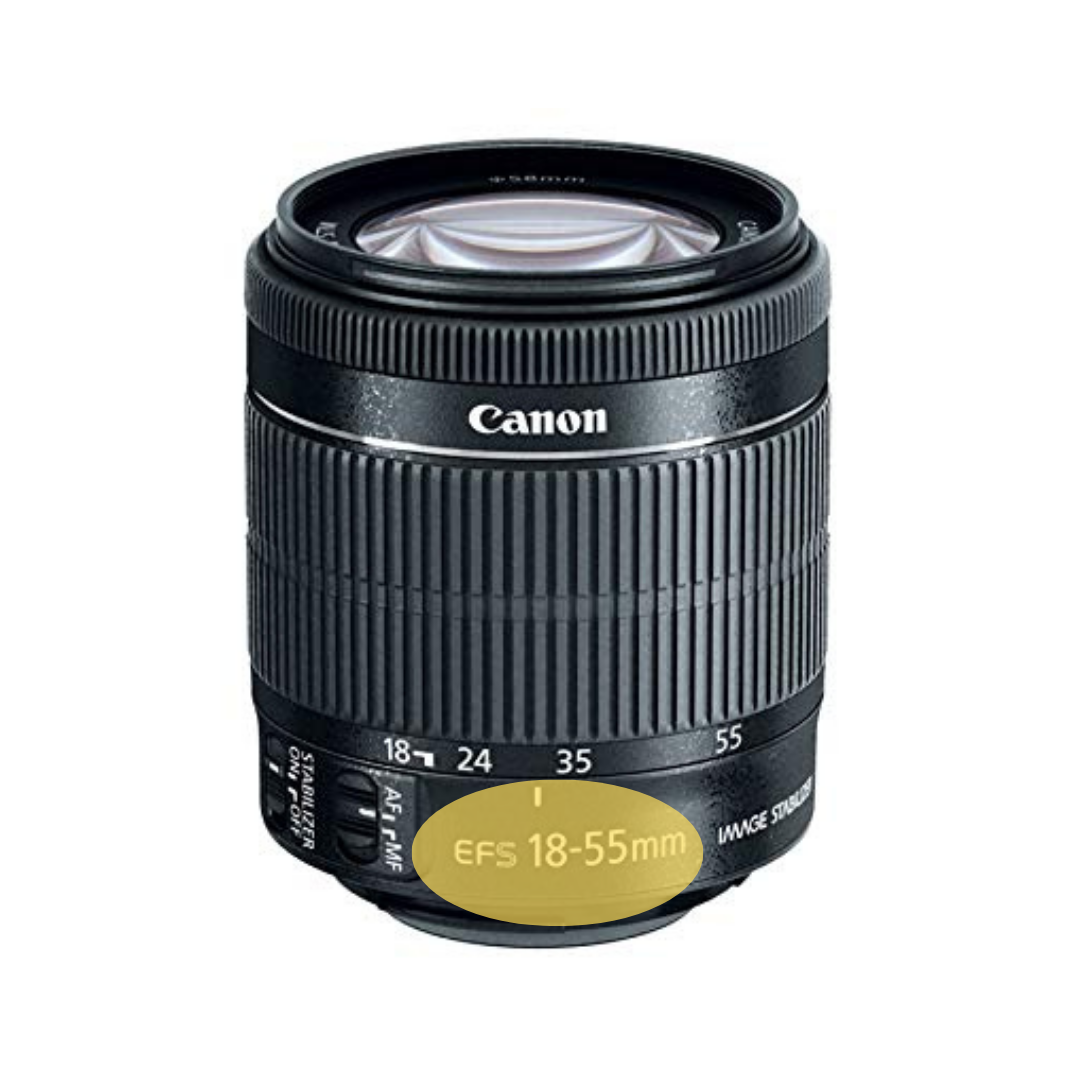
Zoom does more
But different focal lengths are about more than just bringing the subject visually closer or further away. They affect your field of view ( how much of the space top/bottom/left/right does the camera see) and how compressed that space will look.
Take these two images taken in portrait week - one was taken at a Focal Length of 100mm, the other, at 18mm. The longer Focal length ( remember - larger number) compressed the space and made it look tighter ( but also reduced the amount of it around the subject). The shorter Focal length photo made the space behind the girl appear massive and far away even though she stood in place, without as much as moving a toe. Then there is a distortion to the girl's face shape. That's why we talk about some lenses as being 'portrait' lenses - they have a focal length which flatters the face more, while helping to manage the background.

We cover a lot more on this in our courses as it's a super important topic for any photographer to understand, as the choice of your lens will literally change what your camera sees and doesn't see and how those things will look.
Aperture
The next term I want you to understand is Aperture. It refers to the opening inside your lens which lets the light into the camera and which can increase and decrease in size.
And it's precisely how wide that opening can open that can be the difference between a £100 lens and a £300 lens.
If the aperture is the gateway through which the light pours into the camera, a wider opening means that more light can pour into the camera faster - which means the camera can get the light it needs for a good exposure faster - which means it can take the photos faster - which means less chance of blurriness in your images.
Lenses with wider apertures perform better in low light conditions.
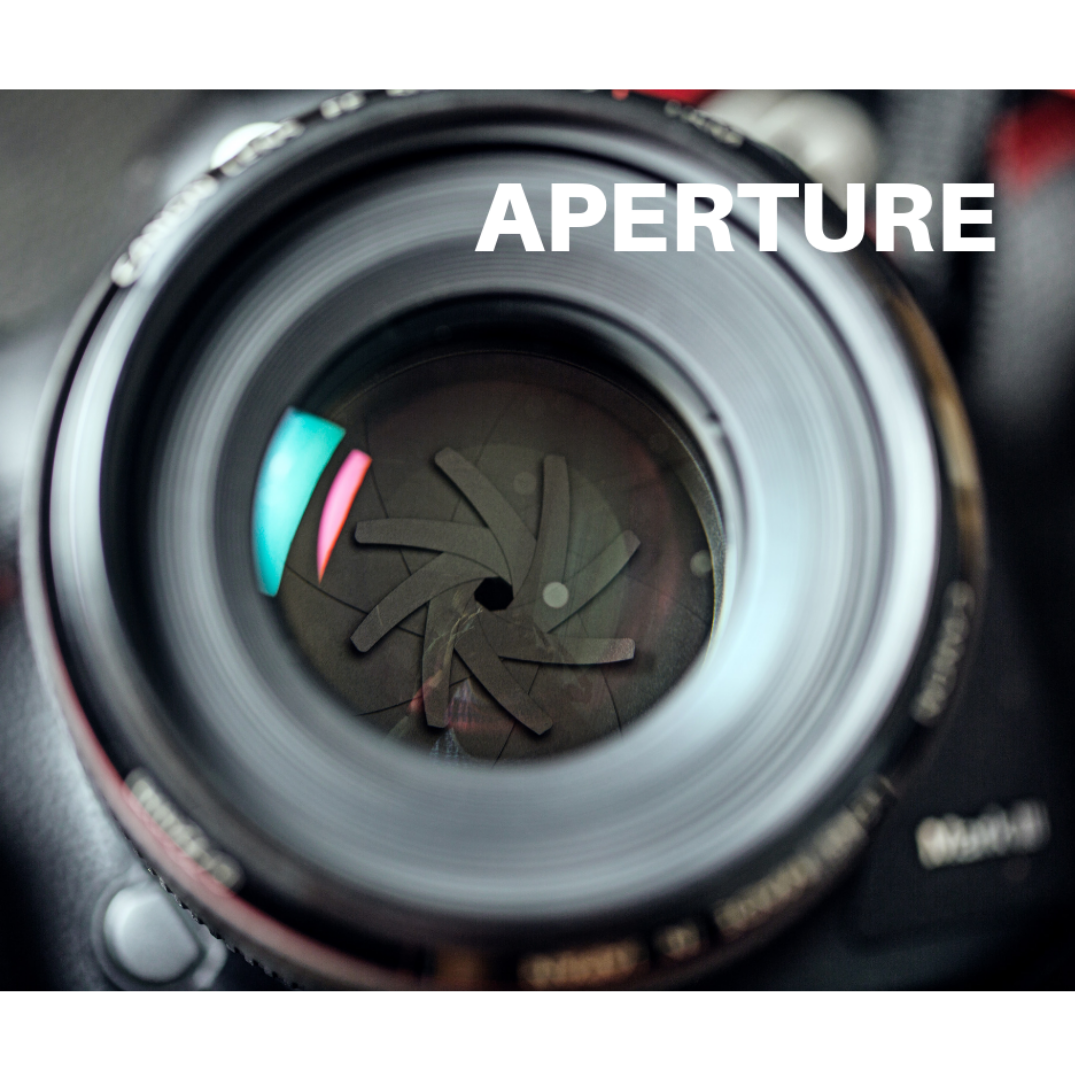
But that's not all. Apertures also help us control the distinction between sharp and blurry parts in your image. So a wide aperture lens will be able to effortlessly create that dreamy blurry background in your images, whereas a lens wit a more medium / narrow aperture will struggle.
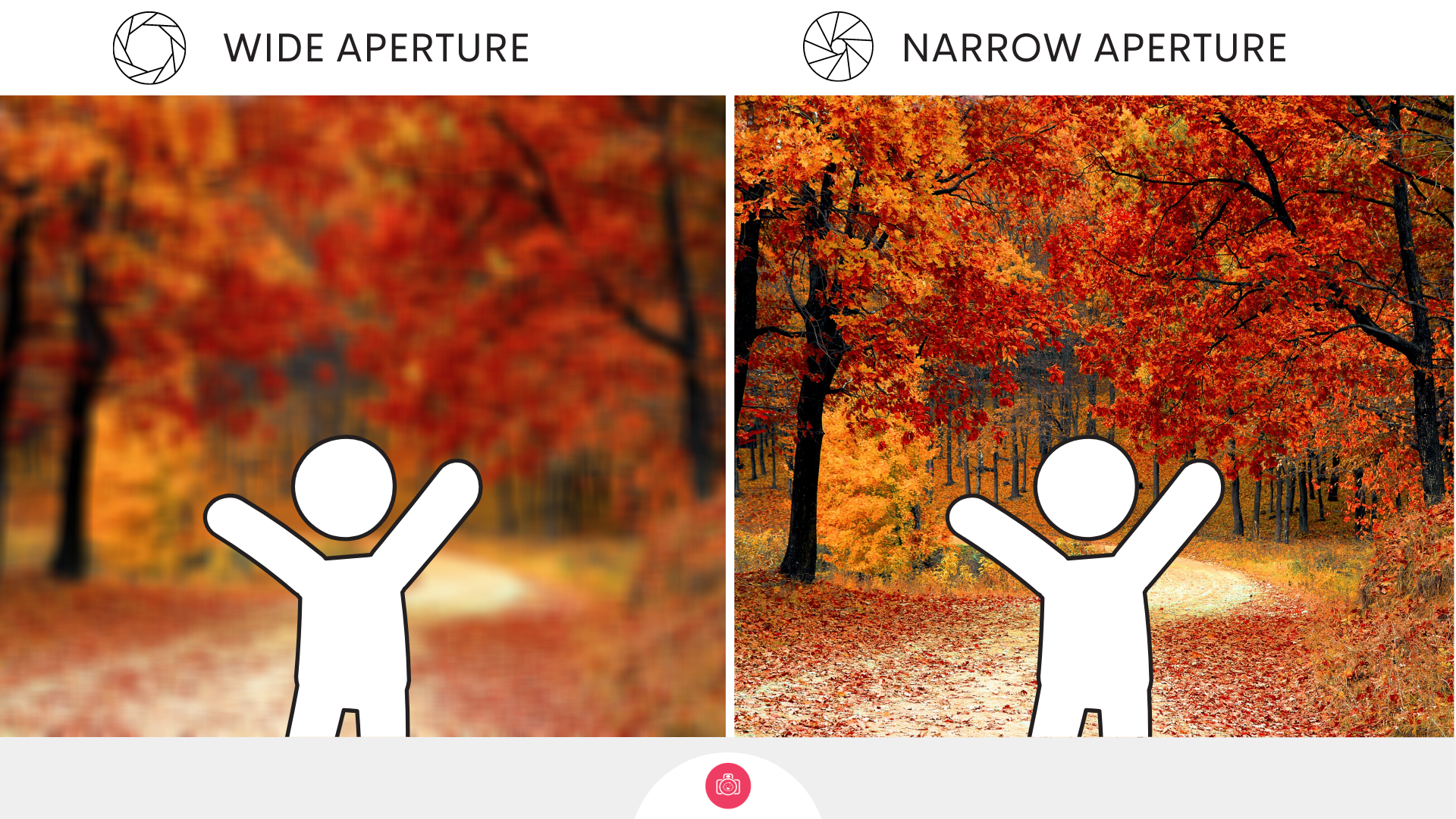
You will find the information on your lens' aperture on the lens itself - usually on the inside ring. See below.
It's expressed in numbers such as f1.4, f1.8, f2.8. f3.5, f5.6 etc all the way to F32 in some lenses, with the smallest numbers indicating ( counterintuitively) the wider aperture. So f1.8 will mean a big wide aperture, whereas F5.6 is a medium one and F18 a narrow one.
Lenses usually only advertise the widest aperture they can get ( even though they offer a wider range). Cheaper kit lenses will show two aperture values - the widest aperture that that lens is capable of will change depending on how zoomed in it will be, so if you see f2.8-f5.6 advertised, you may have the 2.8 available when your camera is least zoomed in, but as soon as you zoom more, it goes up to F5.6.
Now you know what photographers will spend a lot of money to ensure that they can work fast in poor light and get those dreamy soft backgrounds everyone drools over.
BUT, while some of those wide aperture lenses are indeed pretty pricy, there are some budget options that might just give you that edge. More on that later.
OK, so now that you know the two things that are key to understanding lenses out there, let's talk about different lens types.
Lens types:
As far as their construction is concerned, there are only two main types of lenses out there: zoom lenses and prime lenses
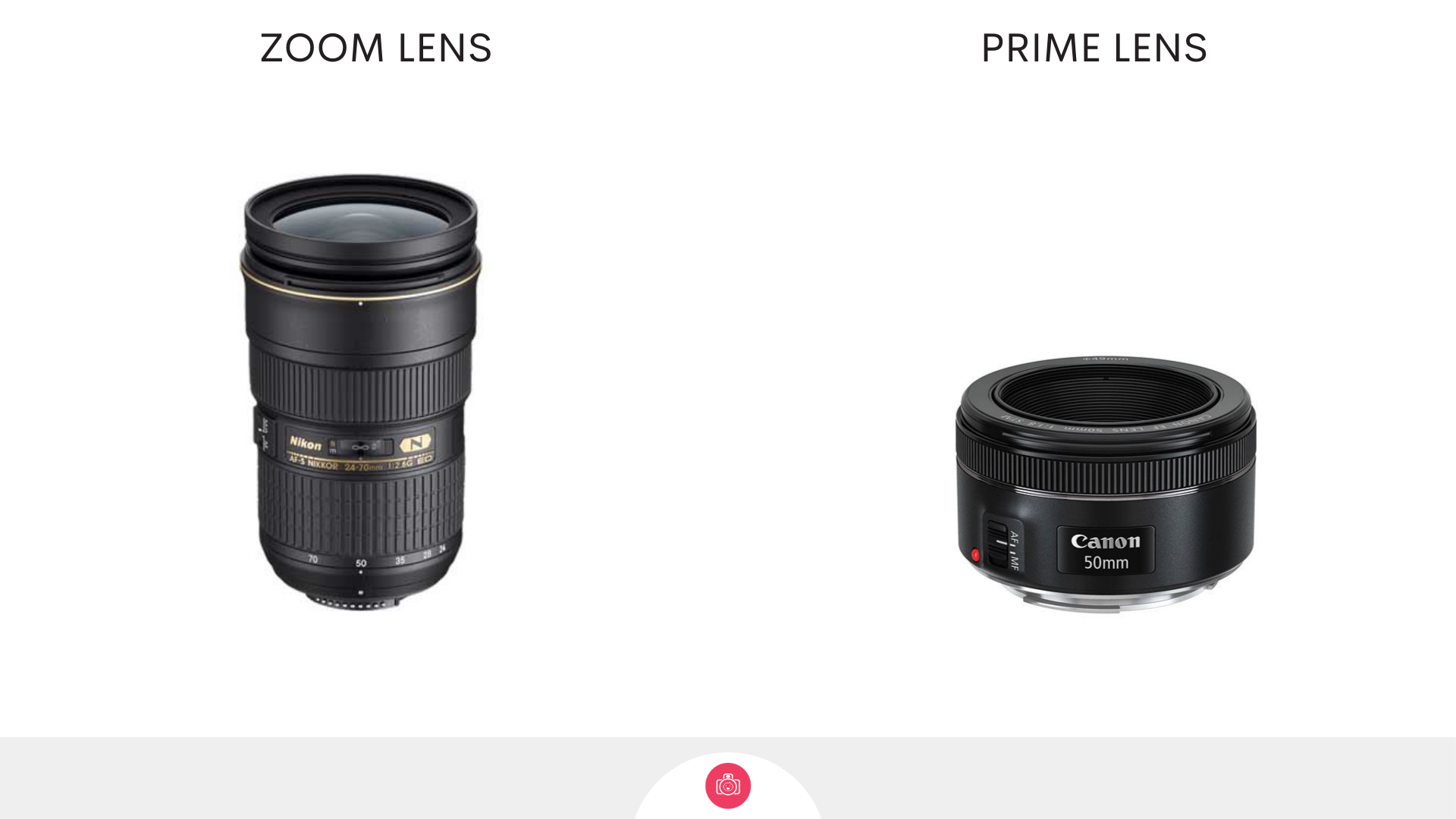
Zoom lenses
Zoom lenses are the ones you are probably most familiar with - you use the outer ring on the lens barrel to zoom in ( make subjects appear closer ) and zoom out ( the opposite). If we're being technically accurate, what we're doing here is moving between multiple focal lengths of your lens.
Those focal length ranges will vary from lens to lens and so you may have a zoom lens with a focal length range between 18-55mm, or 24 - 200mm or 75-300mm ( with many other variations in between)
Prime lenses
Prime lenses are lenses that ONLY HAVE ONE focal length and cannot be zoomed in or out. Yes, you read that correctly. No zoom, so if you want to bring something closer, you need to, well, walk up to it. The primes come in lots of Focal length variations - so you might get a 35mm prime which is a great storytelling size as it allows you to fit a good amount into the frame, but you might also have a 105mm lens which reaches a lot further and is a great portrait lens.
You would think that having just one focal length would be a major disadvantage of those lenses but actually, photographers LOVE them. Like many pros out there I have a sizeable collection of primes and love them much more than my zooms.
And that's because - since they have to do less ( no zooming) , they can do it better. So prime lenses tend to come with much wider apertures and the fixed optics often mean that they are superbly sharp as well. And while the higher end primes come with a hefty price tag, there are some really affordable budget options out there.
There are some other lens sub-categories which are often used in relation to lenses.
Kit lens
If you bought a DSLR camera or even a mirrorless camera, and if it came with a lens, most likely you had a lens, commonly known in the trade as 'kit lens'. It doesn't so much describe the specifics of the lens, but more the general type - a bit of a zoom, but not too much, relatively light and portable, OK performance. While there are some decent kit lenses out there, these tend to be upgraded at the first opportunity by most people, either to a comparable zoom lens but with a wider aperture or to a prime with an even wider aperture.
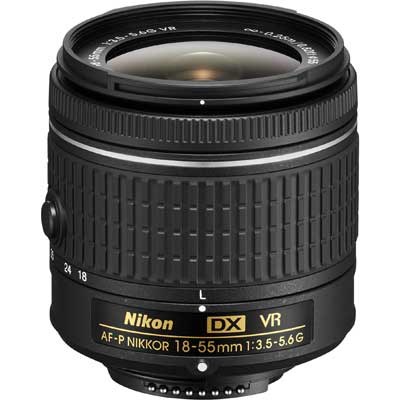
Macro lens
If you ever tried to focus on something really close with your lens, you may have found that your lens simply flat out refused to focus. That's due to the fact that every lens has a Minimum Focusing Distance and simply will not focus on anything closer. But macro lenses are designed to make that distance really tiny so that you can focus really close.
They come in both Prime and zoom varieties.
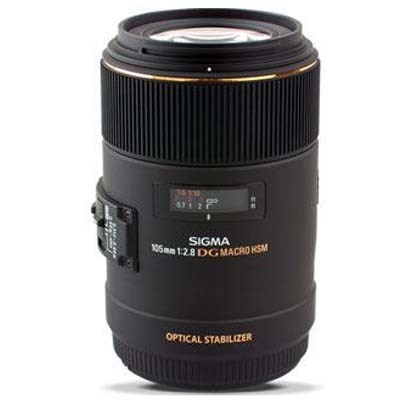
Standard lens
Standard lens describes a lens that will give you a view that's most like what you are seeing with a naked eye, in terms of the perceived distances, compression etc. For full frame cameras that a standard lens will be a 50mm lens, for crop sensor cameras that would be around 35mm.

Telephoto lens
Telephoto lenses are lenses that have a focal length that's larger than the standard lens - typically from 60mm upwards.
Those can be prime lenses or zoom lenses.
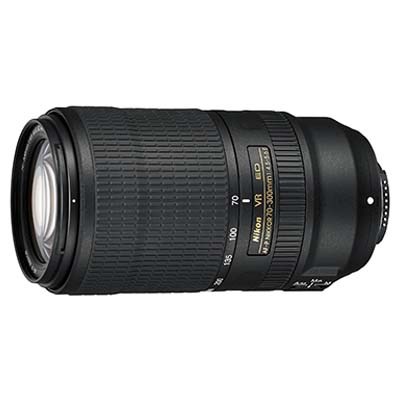
Pancake lens
Pancake lens simply describes a physical size of a lens - small and short, that doesn't protrude much from the camera body, like sticking a pancake on it. They typically have reasonably short FL - from around 16mm to a max of about 40mm
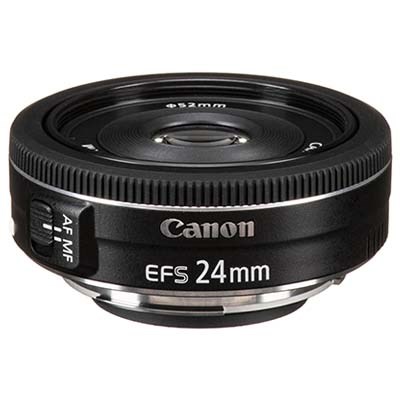
Fish-eye lens
Fish eye lenses are lenses that have an extremely short focal length and give you a really wide field of view, fitting lots of space in. Straight out of camera, those lenses produce images that are distorted as if they were curving around a sphere, and are usually corrected in photo editing software before they are published.
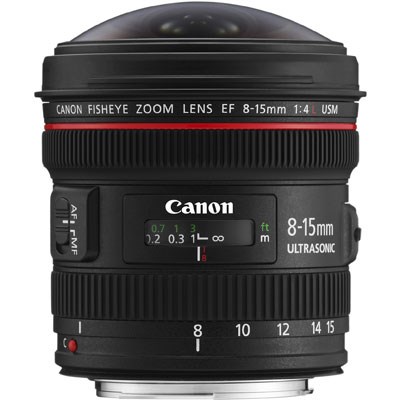
The right lens for the right camera
When you are buying a lens, you need to make sure that the lens is compatible with your camera. And that means several things:
Brand ecosystem
You must get a lens that is made for your camera brand. So, if you have a Nikon, you need to get a Nikon compatible lens, if you have a Canon - a Canon compatible lens etc.
It doesn't mean that you must buy a Nikon branded lens for your Nikon camera - Nikon make lenses for their cameras but there are third party lens manufacturers who produce lenses for ALL major camera manufacturers and you can get them in a variation compatible with your camera. Those third party brands include Sigma, Tamron, Samyang, Viltrox, Zeiss, Yongnuo and a few others. Sigma and Tamron are the largest players and cover both DSLR and mirrorless markets, whereas Samyang and Viltrox focus more on the mirrorless market.
So if you're buying a Sigma lens for your Canon - you need to find one that says : Sigma (Canon mount)
Your camera sensor matters:
I mentioned it in our module on Cameras yesterday, but you do need to know whether your camera is crop or full frame as that will determine whether the lens will work with your camera.
Crop sensor lenses ( typically described as APS-C) are sized for that smaller sensor, and while they will fit onto a full frame camera ( the lens mount is the same) they will either create a dark vignette around the centre of the image (where the light won't reach the sensor) or, on more recent cameras and lenses, your camera might recognise that your lens is a crop lens, and will automatically reduce the image size you will produce ( effectively cropping your image in camera to the size it would have been, had you used a crop sensor camera.)
Your full frame lens will fit on both your crop sensor camera and full frame camera and will work fine on both.
With the advent of mirrorless cameras, we also have new ranges of mirrorless lenses - those will not FIT on your DSLR - the lens mount is different ( usually smaller), although you can get adapter rings which will let you use your DSLR lenses on your new mirrorless camera if you decided to make that leap. Some camera manufacturers even include those rings in their camera bundles as they know it's hard making that leap if you already have lenses and accessories designed for those other cameras.
Auto focus compatibility:
For your camera's autofocus ( AF) to work, there needs to be a mini motor which moves elements in the lens automatically so they align perfectly to form a sharp image. That motor can be located in your lens, in your camera or both.
If the camera body has no AF motor, you need to make sure that your lens is motorised. unless you are buying a straight up manual focus lens)
As far as I'm aware, no Canon cameras have built in AF motor, but all Canon lenses manufactured either by Canon or by Third parties for canon have AF motor in lens so that's one less thing to worry about.
Nikon removed AF motor from their d3000 and d5000 camera ranges ( so d3100, d5500 etc) but the motor is still present in the higher end models. When it comes to lenses, there are Nikon ( and for Nikon) lenses that are produced with and without the internal motor so it'd really important to purchase one that fits your camera. BTW it's fine to add a motorised lens to a camera body that has the AF motor as well. The two work it out between them.
As far as I know, most mirrorless cameras are motor-less, but most mirrorless camera lenses have motor built in.
What influences a lens price?
As a rule of thumb - full frame lenses are significantly more expensive than crop sensor lenses. It's partly because they sport those kind of wide apertures like F1.2 or F1.4 that aren't often seen on crop sensor lenses, but also they are designed for professional use which means higher quality glass, coatings, weatherproofing, aluminium construction ( rather han cheap plastic) etc.
Mirrorless lenses can also be a bit on an expensive side - again, full frame mirrorless are dearer than crop sensor mirrorless.
Just like with cameras, you can significantly reduce the price tag if you buy second hand - I would highly recommend buying from specialised sellers such as mpb, camera jungle or wex - they service and thoroughly check all their gear and will give you between 6 and 12 months warranty.
Decoding a lens:
Look at the front of the lens you have. It will tell you all you need to know about it.
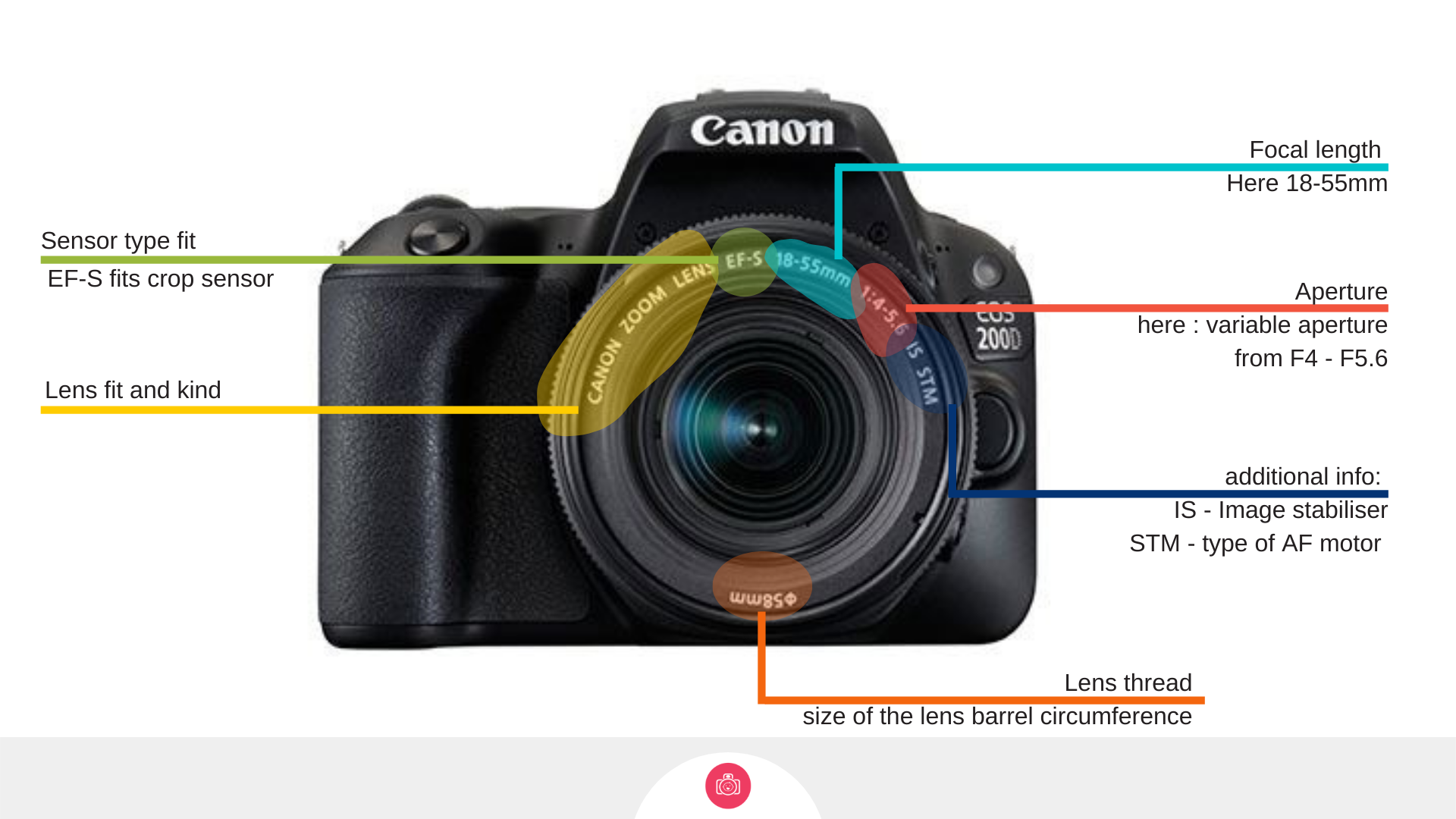
What's my next lens?
It really is hard to say what the right next choice for you might be - as you can see, lots of factors play a part. I will open a thread tomorrow on the Facebook group with some suggestions for different brands and will be able to advise you a bit individually.
Whatever camera or lens you choose, remember it’s just an instrument. A great photographer will capture an amazing image with the simplest camera. It really doesn’t matter all that much if yours is a Nikon, Canon or anything else – no one has ever looked at a photos and went – oooh, yes, I can see what that Canon did here…. It’s the person behind the camera that matters most.
Let me leave you with a quote by a magnificent photographer, Ernst Haas